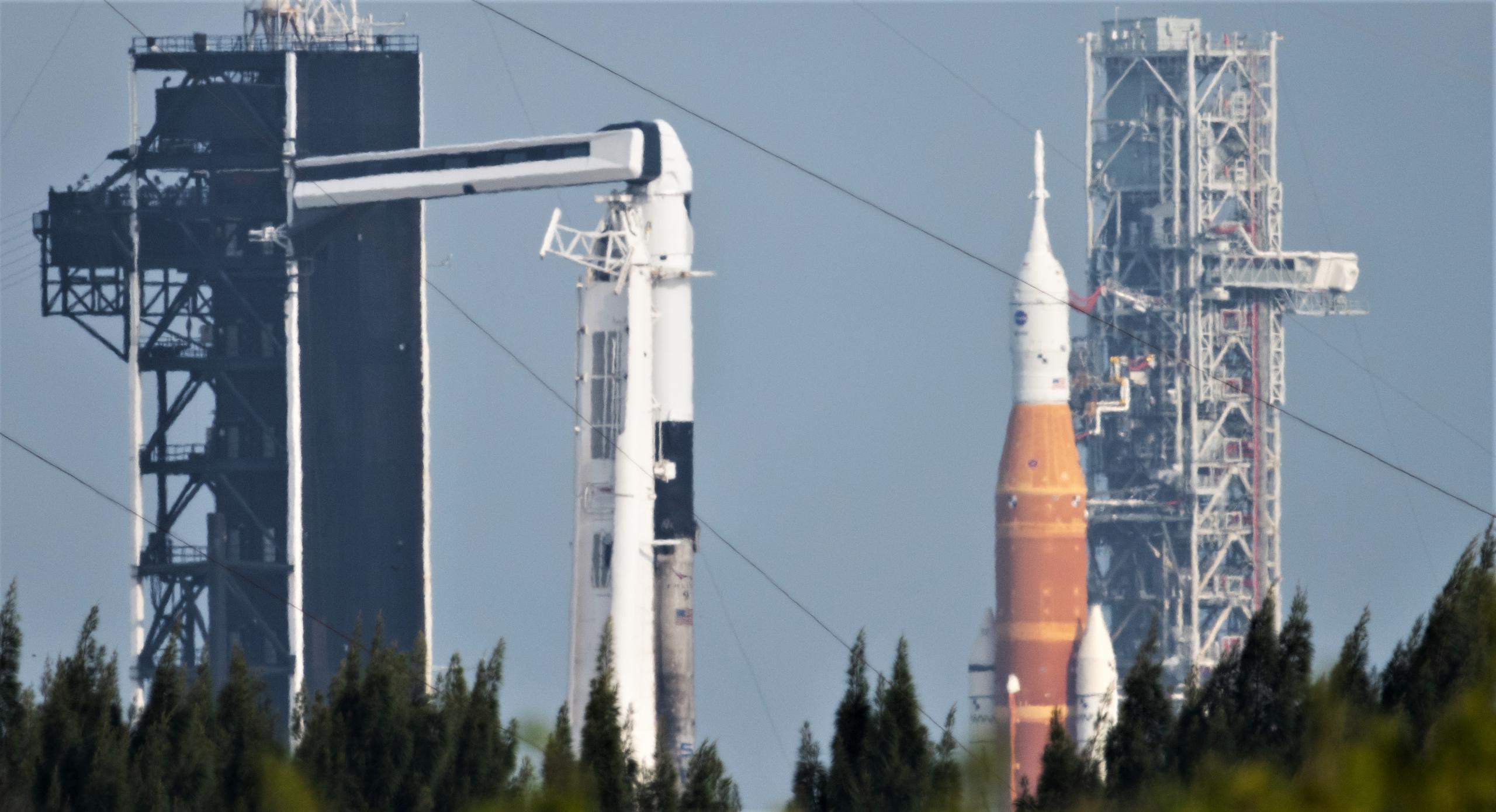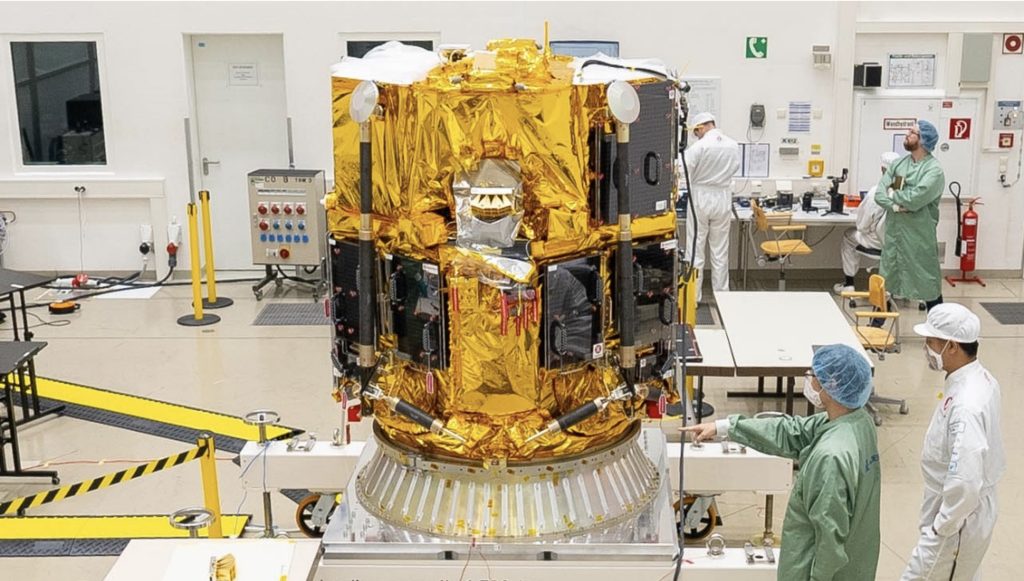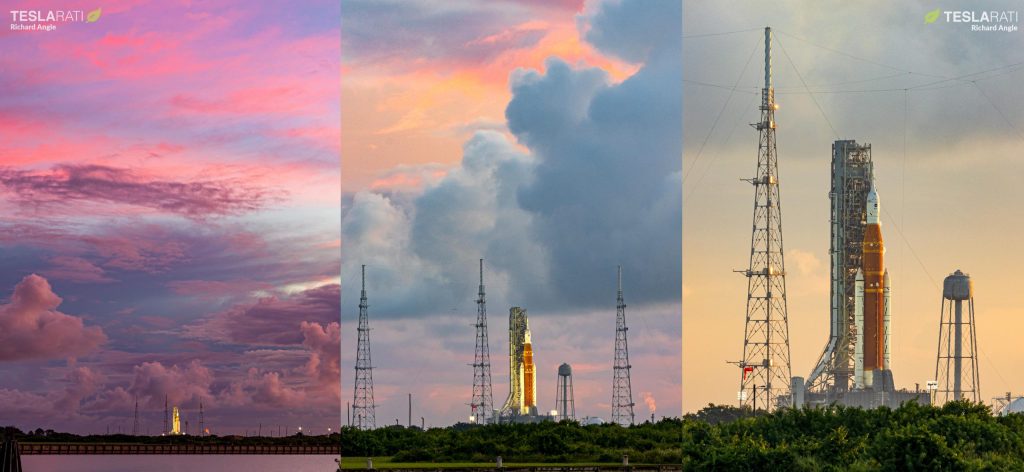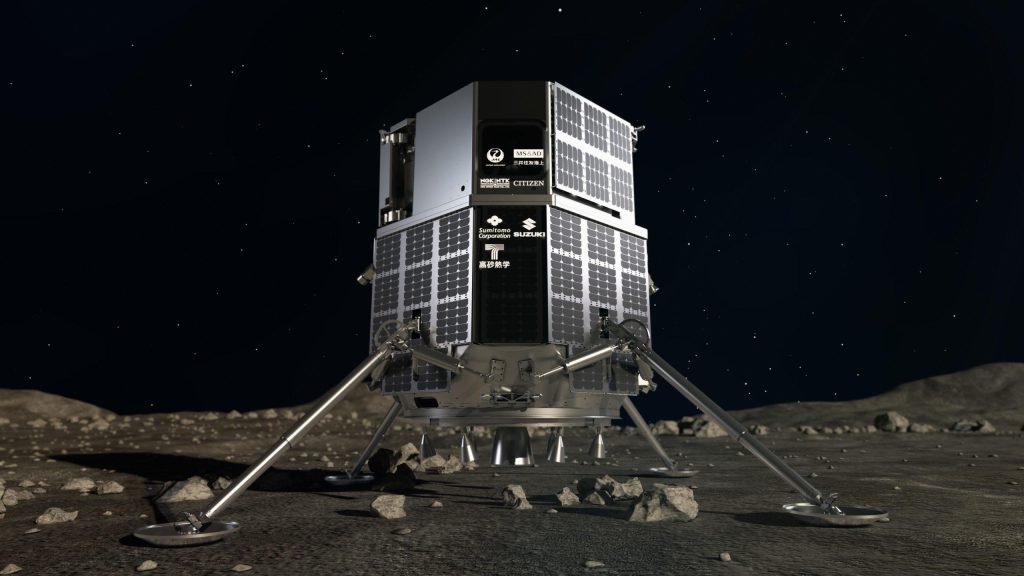

News
SpaceX, NASA targeting separate Moon launches days apart
NASA and a SpaceX customer have announced plans to launch two unrelated Moon missions days apart next month.
On October 12th, NASA confirmed that it will roll its Space Launch System (SLS) rocket out to its Kennedy Space Center LC-39A pad for the fourth time as early as November 4th. Barring surprises, the rocket’s next launch attempt is scheduled no earlier than (NET) 12:07 am EDT (17:07 UTC), November 14th. SLS is tasked with launching an uncrewed prototype of NASA’s Orion crew capsule on its way to the Moon, where the spacecraft will attempt to enter lunar orbit and conduct tests before returning to Earth.
The same day, Japanese startup ispace confirmed that HAKUTO-R M1, its first commercial Moon lander, is scheduled to launch on a SpaceX Falcon 9 rocket sometime between November 9th and 15th. While NASA has a $73M contract with ispace to develop a second-generation SERIES-2 Moon lander in the United States, the first-generation HAKUTO-R program has been an almost entirely private endeavor. The first M1 lander will attempt to deliver two rovers – one built by Japan and the other by the United Arab Emirates – and several other commercial and government payloads to the surface of the Moon.


As of 2020, HAKUTO-R is expected to weigh around 1050 kilograms (~2300 lb) at launch and has been designed to land up to 30 kilograms (~66 lb) of usable payload on the Moon. ispace has designed and built most of the lander’s structures but contracted with Europe’s ArianeGroup to provide the propulsion system and fully assemble, integrate, and test the lander in Germany.
According to ispace’s documentation [PDF], Falcon 9 will launch HAKUTO-R into a “supersynchronous” Earth orbit, where the lander will check out its systems before eventually using its own propulsion to thrust itself free of Earth’s gravity well and into the Moon’s. It expects a nominal transit from Earth orbit to the lunar surface to take at least 20 days. The lander is designed to survive up to 12 days on the Moon, during which it will attempt to operate its onboard experiments, deploy both of its tiny rovers, and transmit all the data gathered back to Earth.

The startup initially [PDF] described its arrangements with SpaceX as contracts to launch two landers as secondary payloads on two Falcon 9 rockets. In its press releases, ispace no longer specifies whether the one-ton spacecraft will be the only payload on Falcon 9. It’s possible that HAKUTO-R M1 will be a secondary payload on SpaceX’s launch of the Eutelsat 10B geostationary communications satellite, which is currently scheduled NET November 11th. In a rare move, SpaceX will reportedly expend Falcon 9’s reusable first-stage booster during the mission, leaving much more performance on the table.
Update: Launch photographer Ben Cooper reports that Falcon 9’s reusable booster will fly back to the Florida coast to land on land after launching HAKUTO-R, strongly implying that the Moon lander will actually be the rocket’s only payload.
ispace has raised approximately $210 million since it was founded in 2010 – coincidentally the same year that the US Congress forced NASA to begin developing the SLS rocket. 12 years later, there’s a chance that the first launches of SLS and HAKUTO-R could occur hours apart.
When it rolls out next month, NASA’s SLS rocket will be heading to the launch pad for the fourth time. SLS and Orion have had a less-than-smooth journey to their first launch, suffering half a decade of delays and running tens of billions of dollars over budget as a result. Once all the pieces had arrived in Florida, it took NASA and its contractors about 12 months to finish assembling SLS and Orion and begin testing the integrated rocket.
Since integrated testing began in April 2022, SLS has undergone five publicized wet dress rehearsal (WDR) tests in April, June, and September. It also attempted to launch twice on August 29th and September 3rd, although both attempts were arguably a continuation of WDR testing in everything but name. But it appears that when the rocket rolls out for the fourth time, NASA will have finally completed nearly all of the testing it should have finished before loudly proclaiming that its “Mega Moon Rocket” was ready to launch back in August.
The SLS launch debut will almost certainly take precedence over any other Cape Canaveral launch around the same time, including HAKUTO-R M1, but SpaceX could potentially launch the Moon lander roughly one day before or after NASA’s Moon rocket.
Elon Musk
Why Tesla’s Q3 could be one of its biggest quarters in history
Tesla could stand to benefit from the removal of the $7,500 EV tax credit at the end of Q3.

Tesla has gotten off to a slow start in 2025, as the first half of the year has not been one to remember from a delivery perspective.
However, Q3 could end up being one of the best the company has had in history, with the United States potentially being a major contributor to what might reverse a slow start to the year.
Earlier today, the United States’ House of Representatives officially passed President Trump’s “Big Beautiful Bill,” after it made its way through the Senate earlier this week. The bill will head to President Trump, as he looks to sign it before his July 4 deadline.
The Bill will effectively bring closure to the $7,500 EV tax credit, which will end on September 30, 2025. This means, over the next three months in the United States, those who are looking to buy an EV will have their last chance to take advantage of the credit. EVs will then be, for most people, $7,500 more expensive, in essence.
The tax credit is available to any single filer who makes under $150,000 per year, $225,000 a year to a head of household, and $300,000 to couples filing jointly.
Ending the tax credit was expected with the Trump administration, as his policies have leaned significantly toward reliance on fossil fuels, ending what he calls an “EV mandate.” He has used this phrase several times in disagreements with Tesla CEO Elon Musk.
Nevertheless, those who have been on the fence about buying a Tesla, or any EV, for that matter, will have some decisions to make in the next three months. While all companies will stand to benefit from this time crunch, Tesla could be the true winner because of its sheer volume.
If things are done correctly, meaning if Tesla can also offer incentives like 0% APR, special pricing on leasing or financing, or other advantages (like free Red, White, and Blue for a short period of time in celebration of Independence Day), it could see some real volume in sales this quarter.
You can now buy a Tesla in Red, White, and Blue for free until July 14 https://t.co/iAwhaRFOH0
— TESLARATI (@Teslarati) July 3, 2025
Tesla is just a shade under 721,000 deliveries for the year, so it’s on pace for roughly 1.4 million for 2025. This would be a decrease from the 1.8 million cars it delivered in each of the last two years. Traditionally, the second half of the year has produced Tesla’s strongest quarters. Its top three quarters in terms of deliveries are Q4 2024 with 495,570 vehicles, Q4 2023 with 484,507 vehicles, and Q3 2024 with 462,890 vehicles.
Elon Musk
Tesla Full Self-Driving testing continues European expansion: here’s where
Tesla has launched Full Self-Driving testing in a fifth European country ahead of its launch.

Tesla Full Self-Driving is being tested in several countries across Europe as the company prepares to launch its driver assistance suite on the continent.
The company is still working through the regulatory hurdles with the European Union. They are plentiful and difficult to navigate, but Tesla is still making progress as its testing of FSD continues to expand.
Today, it officially began testing in a new country, as more regions open their doors to Tesla. Many owners and potential customers in Europe are awaiting its launch.
On Thursday, Tesla officially confirmed that Full Self-Driving testing is underway in Spain, as the company shared an extensive video of a trip through the streets of Madrid:
Como pez en el agua …
FSD Supervised testing in Madrid, Spain
Pending regulatory approval pic.twitter.com/txTgoWseuA
— Tesla Europe & Middle East (@teslaeurope) July 3, 2025
The launch of Full Self-Driving testing in Spain marks the fifth country in which Tesla has started assessing the suite’s performance in the European market.
Across the past several months, Tesla has been expanding the scope of countries where Full Self-Driving is being tested. It has already made it to Italy, France, the Netherlands, and Germany previously.
Tesla has already filed applications to have Full Self-Driving (Supervised) launched across the European Union, but CEO Elon Musk has indicated that this particular step has been the delay in the official launch of the suite thus far.
In mid-June, Musk revealed the frustrations Tesla has felt during its efforts to launch its Full Self-Driving (Supervised) suite in Europe, stating that the holdup can be attributed to authorities in various countries, as well as the EU as a whole:
Tesla Full Self-Driving’s European launch frustrations revealed by Elon Musk
“Waiting for Dutch authorities and then the EU to approve. Very frustrating and hurts the safety of people in Europe, as driving with advanced Autopilot on results in four times fewer injuries! Please ask your governing authorities to accelerate making Tesla safer in Europe.”
Waiting for Dutch authorities and then the EU to approve.
Very frustrating and hurts the safety of people in Europe, as driving with advanced Autopilot on results in four times fewer injuries!
Please ask your governing authorities to accelerate making Tesla safer in Europe. https://t.co/QIYCXhhaQp
— Elon Musk (@elonmusk) June 11, 2025
Tesla said last year that it planned to launch Full Self-Driving in Europe in 2025.
Elon Musk
xAI’s Memphis data center receives air permit despite community criticism
xAI welcomed the development in a post on its official xAI Memphis account on X.

Elon Musk’s artificial intelligence startup xAI has secured an air permit from Memphis health officials for its data center project, despite critics’ opposition and pending legal action. The Shelby County Health Department approved the permit this week, allowing xAI to operate 15 mobile gas turbines at its facility.
Air permit granted
The air permit comes after months of protests from Memphis residents and environmental justice advocates, who alleged that xAI violated the Clean Air Act by operating gas turbines without prior approval, as per a report from WIRED.
The Southern Environmental Law Center (SELC) and the NAACP has claimed that xAI installed dozens of gas turbines at its new data campus without acquiring the mandatory Prevention of Significant Deterioration (PSD) permit required for large-scale emission sources.
Local officials previously stated the turbines were considered “temporary” and thus not subject to stricter permitting. xAI applied for an air permit in January 2025, and in June, Memphis Mayor Paul Young acknowledged that the company was operating 21 turbines. SELC, however, has claimed that aerial footage shows the number may be as high as 35.
Critics are not giving up
Civil rights groups have stated that they intend to move forward with legal action. “xAI’s decision to install and operate dozens of polluting gas turbines without any permits or public oversight is a clear violation of the Clean Air Act,” said Patrick Anderson, senior attorney at SELC.
“Over the last year, these turbines have pumped out pollution that threatens the health of Memphis families. This notice paves the way for a lawsuit that can hold xAI accountable for its unlawful refusal to get permits for its gas turbines,” he added.
Sharon Wilson, a certified optical gas imaging thermographer, also described the emissions cloud in Memphis as notable. “I expected to see the typical power plant type of pollution that I see. What I saw was way worse than what I expected,” she said.
-

 Elon Musk3 days ago
Elon Musk3 days agoTesla investors will be shocked by Jim Cramer’s latest assessment
-

 News1 week ago
News1 week agoTesla Robotaxi’s biggest challenge seems to be this one thing
-

 News2 weeks ago
News2 weeks agoTexas lawmakers urge Tesla to delay Austin robotaxi launch to September
-

 Elon Musk2 weeks ago
Elon Musk2 weeks agoFirst Look at Tesla’s Robotaxi App: features, design, and more
-

 Elon Musk2 weeks ago
Elon Musk2 weeks agoxAI’s Grok 3 partners with Oracle Cloud for corporate AI innovation
-

 News2 weeks ago
News2 weeks agoSpaceX and Elon Musk share insights on Starship Ship 36’s RUD
-

 News2 weeks ago
News2 weeks agoWatch Tesla’s first driverless public Robotaxi rides in Texas
-

 News2 weeks ago
News2 weeks agoTesla has started rolling out initial round of Robotaxi invites

















